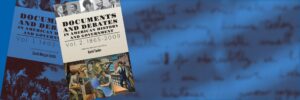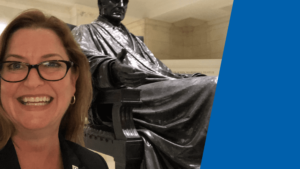Tips for Teaching Online During the Pandemic
At TAH, we know plans for the return to school this fall remain in flux in many districts—and that even though in many cases classroom instruction won’t look ‘like normal,’ you and your colleagues will be asked to teach much of the same curriculum you always teach.
If ways to incorporate distanced learning forms any part of your back-to-school planning, we invite you to take a peek at these tips from teachers in our network for keeping students focused in the online environment.
Making the Most of A-Synchronous Instructional Time
Last spring, administrators allowed fewer hours for live interactions between students and teachers, due to limitations of videoconferencing software as well as concerns about students’ access to internet and tolerance for uninterrupted computer time. Teachers had to decide which activities should happen in real time, and which assignments students would complete on their own. Teachers who prioritized live discussion had to deliver to remote students the information they needed to engage in discussion.
Teachers found a variety of creative solutions. Shreeta Ashley designed beautifully layered interactive graphics to deliver historical background. She created an interactive slideshow on 19th century reform movements. Clicking on parts of the slide opened up further details, allowing students to explore particular reform efforts.
Good history teachers often use class time to tell interesting stories. Stories capture student interest, supply the historical context for primary documents, and help students focus on key historical questions. Carla Smith wrote and posted written versions of the stories she usually tells in class.
Other teachers use videos or arresting visual images to tell stories. Ashley’s slide show on reform movements included historical photos and political cartoons, along multiple-choice questions to guide students as they “read” the images. Amy Parker, finding that national parks and museums offered online exhibits, sent students on virtual museum scavenger hunts.
Managing the Hybrid, Synchronous Classroom
Teachers who must teach both students working from home and those sitting in the classroom most likely will find it easiest to convert all of their lesson plans into an online form. At Jen Jolley‘s high school, teachers will be asked to keep a Zoom window open for students at home while teaching students sitting in front of them. So that all students would get the same instructions, Jolley decided to present all her lessons in an online form, using an overhead projector to show to students in the physical classroom what those at home see on their computer screens.
Jolley spent much of her summer thinking through the online instructional options. She experimented with a range of software that added interactive features to slides. Since protocols for spacing desks limit opportunities for students to work together in her classroom, she looked for programs that allow online collaboration. Programs like Nearpod, Pear Deck, and Padlet allow teachers to project comment boards alongside Google Slides, so that students may put their questions and comments before the whole class. Some of these programs allow students to work together online building maps, timelines, “word walls” and other online visuals.
Promoting Online Discussion
Many teachers saved online sessions for conversation about primary documents and the historical questions these raise. But conversation is tricky when conducted through a screen.
Laura Mayberry found non-threatening ways to prompt discussion. Lindsay Peterson helped students learn verbal ways to signal who and what they were responding to. She also figured out how to stage the online version of a structured “Fishbowl” discussion. Nancie Lindblom used the breakout rooms that are a feature of Zoom to allow students to work through discussion questions in small groups.
Donna Fedele arranged for students to present their research projects in small group sessions. With each report given to a small, attentive audience of the teacher and two or three student peers, students received informal yet thoughtful feedback. At the same time, students gained practice in listening and responding to others’ work.
Helping Students Decode Documents While Working at Home
Many students need a teacher’s coaching when reading primary documents. Carla Smith set aside time to meet with struggling readers on Zoom, in small workshop groups.
Melanie Stuthard found the “Actively Learn” application met an important need during distanced learning. “Actively Learn” is a software program that guides students through reading assignments even as they work on their own. The teacher imports a passage from a primary document into a template, and then marks places in the reading where students must stop and answer interpretive questions. With Actively Learn, teachers can require students to figure out the significance of key words and phrases before ploughing further into a passage, so that their discoveries shape how they understand the entire passage when they reach the end of it. A teacher working remotely may check students’ work or even monitor students as they work, prompting them to rethink a response. Stuthard made a tutorial video on Actively Learn to share with teachers in the TAH network.
For many students, visual images provide a less intimidating introduction to primary document analysis, especially when they are working independently from home. This was one motive behind Ashley’s layered slides on reform movements. Jen Jolley recommends the interactive game offered at “Engaging Congress,” a project of the Center for Representative Government at Indiana University. It takes a historical perspective on the challenges of representative government, using photographs, political cartoons, government posters and other visual images from the Library of Congress.
Other teachers used individual or group Zoom sessions to guide or review student work. Kelly Eddy devoted a week near the end of spring term to meeting each of her students individually.
Relieve the Psychological Barriers to Online Teaching and Learning
Teachers, as well as students, felt anxiety at the need to quickly master online skills. Yet those who had experienced online learning in Teaching American History’s Master’s program found the transition relatively manageable. Some, like Stuthard, Lindblom, and Parker, already used online lesson delivery in their classrooms regularly—because they had discarded the textbook in favor of primary documents, supported by curriculum they themselves had designed.
At first, it was a challenge simply to shift students’ expectations about how classes would meet and assignments would be posted. Laura Mayberry anticipated the closure and told students what to expect. Kim Grosenbacher was glad she had already asked students to install on their phones “Remind,” an app that allowed her to contact them with information about assignments.
Even when they themselves felt prepared for the new normal, teachers sensed students’ stress, and worked to minimize it. They spoke of supporting student mental health during their isolation at home, away from friends and teacher mentors. They kept Zoom meetings upbeat. Grosenbacher varied her Zoom background to reflect American political institutions, appearing in front the floor of the House, Supreme Court chambers, or the magnificently ornamented main hall of the Library of Congress. Mayberry played a series of upbeat billboard top hits as she admitted students into Zoom sessions. Mayberry and others took time out of the lessons to inquire after students’ activities during the initial weeks of sheltering in place. Car Smith allowed a few minutes at the end of sessions for students to chat with friends they missed.
Empower Students through Recording the History of the Pandemic
Many teachers realized that students could achieve a feeling of control in uncertain times if they began writing their own histories. Kim Grosenbacher urged students to take photos of deserted city streets. Stacy Moses used a regular journaling assignment to encourage students to record their experience of the pandemic, and Jotwan Daniels planned to do likewise.
Kelly Steffen borrowed an idea from “Good Morning, America.” She asked each of her students to prepare a short video about their experience of the pandemic, structuring it around a four-word phrase. One soon-to-graduate student chose the phrase “Senior Year Suddenly Stops” to record the loss of the usual celebrations and goodbyes. The project was fun for students and consoling for Steffen. After the abrupt end of daily contacts with students she coached, encouraged, and cared about, she admitted, “I just wanted to see their faces!”
Rusty Eder reshaped a customary project he assigns each spring, asking students to write the imaginative diary of an ancestor. This year, he asked students to write their own diaries of life during pandemic, addressing them to their future grandchildren.
Bring Perspective by Making Historical Connections
Good social studies teachers constantly help students understand present conditions in the light of earlier history. Teachers helped students make historical connections between the current pandemic and earlier ones, and between the current crisis and earlier crises such as the Great Depression.
Rebecca McGinnis had already told her students about her MAHG thesis work on a 19th century cholera epidemic; now she reflected with them on the attitudes Americans display during medical emergencies, as well as on the responses of neighbors to those affected. Laura Mayberry fielded questions on gubernatorial vs. presidential powers, connecting them to students’ study of federalism.
These historical connections become ever more relevant as pandemic conditions persist. Social studies teachers occupy a critical role, helping young people draw guidance from history as they face an unfolding present.



